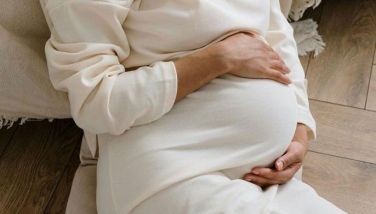Too clean or not too clean? (Hygiene Hypothesis)
Want a clean start? Brush your teeth with toothpaste that kills bad breath-causing germs. Apply antimicrobial lotion and hand sanitizer to kill 99.9 percent of bacteria. Wipe the table with a disinfectant before using your germ-free wireless mouse. Yes, amazingly, even gadgets are becoming germ-free!
Obviously, products are geared toward making the earth a cleaner and healthier place. With the great advancement of science, people are finding more ways to lessen the risks of diseases caused by viruses and bacteria (i.e., vaccines and antibiotics). However, we all know that anything in excess is bad. And believe it or not, being excessively clean is not as good as we think.
Our immune system protects us against gazillions of invasions every day with the help of immune cells aptly called helper T cells. One defense strategy uses Type 1 helper T (Th1) cells that act against intracellular pathogens. These are bacteria, viruses, and parasites that invade and control the inside of healthy cells. The Th1 cells defend us by stimulating the attack of “macrophages” which act like a vicious Pacman gobbling up the pathogen-infected cells. This consequently prevents the spread of the intracellular pathogens from the remaining healthy cells. However, when macrophages overreact, they start to destroy even uninfected cells and autoimmune diseases arise.
Another strategy against other harmful foreign substances involves Type 2 helper T (Th2) cells which order the release of immune proteins called “antibodies.” These antibodies tightly bind to foreign invaders, preventing them from doing their destructive actions and eventually causing their deaths. Overproduction of antibodies against foreign substances that are deemed harmless leads to allergies like asthma, hay fever, and eczema.
The pathogens in these scenarios seem to be the root of all evils. Nevertheless, they are actually important in the development of the immune system during our early childhood. They stimulate and train the immune system to work hard in fighting the bad guys. They act as danger signals that regulate the pattern of our immune responses. And like combat warriors, for the immune system to be in its best form, it must exercise its function regularly.
Will the lack of training cause the immune system to lose against its opponents? Well, not exactly.
A seesaw relationship transpires between the two strategies — when one goes up, the other one must go down. When Th1 defense becomes inactive, Th2 becomes overactive. With the improvements in hygiene and medicine, the training sessions of the immune system with bacteria, viruses, and parasites have decreased. Similar to any skill, if not used often, it would be dysfunctional in the long run. With no practice, the defense against microorganisms loses its ability to fight and becomes inactive. This causes an overreaction of the other defense system, fighting even the harmless substances, eventually causing allergies. Without microorganisms and foreign bodies that teach the immune system the bad from the good, our defense strategy may be altered, making people become more susceptible to allergic diseases — a concept known as the Hygiene Hypothesis.
The Hygiene Hypothesis was first proposed by David P. Strachan in 1989 in an article in the British Medical Journal when he observed that children from larger families have lower tendencies of having hay fever and eczema than those from single child families. He then proposed that this is due to greater exposure to microbial infections among siblings. This hypothesis is also used to explain why allergies are less common in rural areas and Third World countries than in urban and industrialized ones. Studies also show that immigrants from developing countries who migrated to developed countries eventually acquire more immunological diseases. With the Hygiene Hypothesis, the Philippines can be deemed as a healthy country after all! Isn’t this a great motivation for Filipinos to stay? To all migrating Pinoys, take care of your health!
However, the imbalance between Th1 and Th2 cannot elucidate the similar increase in autoimmune diseases which are associated with an overactive Th1 defense. Another explanation of the Hygiene Hypothesis depends on the existence of regulatory cells which control the unregulated reaction of Th1 and Th2 cells in the presence of pathogens. Thus, when people have good hygiene, the lack of pathogens and microbes inhibits the stimulation of regulatory cells which leads to uncontrolled Th1 and Th2 responses, causing autoimmune and allergic diseases.
Despite numerous suggested mechanisms behind the Hygiene Hypothesis, please don’t get this wrong. Don’t feed your children with mud or bacterial culture to prevent them from getting allergies. The Hygiene Hypothesis only reminds us that too little is as bad as too much. A balance between healthy living and clean living must be observed. Too much cleanliness is not really necessary and too much dirt is not really safe. So continue practicing a clean start. But don’t stop living with nature. The immune system, after all, is there for a reason.
* * *
Glaiza Tan is a 2008 BS MBB summa cum laude graduate of the University of the Philippines, Diliman. She is currently a research assistant in the PharmaSeas Program and is also part of the Virtual Laboratory of Biomolecular Structures at the UP Marine Science Institute. E-mail her at [email protected].
- Latest





















 Partner
Partner






